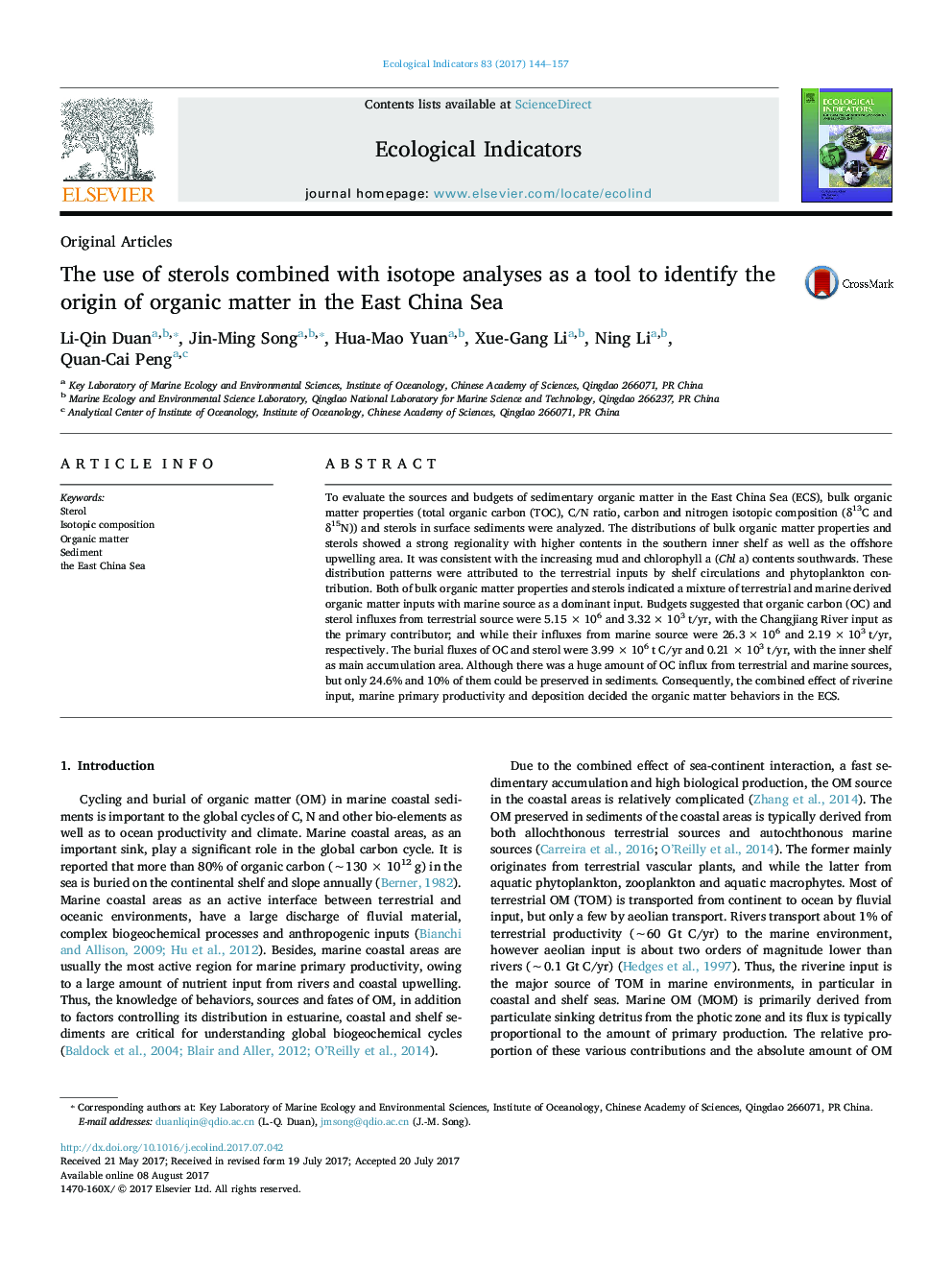| Article ID | Journal | Published Year | Pages | File Type |
|---|---|---|---|---|
| 5741486 | Ecological Indicators | 2017 | 14 Pages |
â¢Combination of sterol and isotope were used to identify organic matter sources.â¢Qualitative and quantitative sources and budgets of organic matter were studied.â¢Combined effects of sources and deposition decided the organic matter behaviors.
To evaluate the sources and budgets of sedimentary organic matter in the East China Sea (ECS), bulk organic matter properties (total organic carbon (TOC), C/N ratio, carbon and nitrogen isotopic composition (δ13C and δ15N)) and sterols in surface sediments were analyzed. The distributions of bulk organic matter properties and sterols showed a strong regionality with higher contents in the southern inner shelf as well as the offshore upwelling area. It was consistent with the increasing mud and chlorophyll a (Chl a) contents southwards. These distribution patterns were attributed to the terrestrial inputs by shelf circulations and phytoplankton contribution. Both of bulk organic matter properties and sterols indicated a mixture of terrestrial and marine derived organic matter inputs with marine source as a dominant input. Budgets suggested that organic carbon (OC) and sterol influxes from terrestrial source were 5.15 Ã 106 and 3.32 Ã 103 t/yr, with the Changjiang River input as the primary contributor; and while their influxes from marine source were 26.3 Ã 106 and 2.19 Ã 103 t/yr, respectively. The burial fluxes of OC and sterol were 3.99 Ã 106 t C/yr and 0.21 Ã 103 t/yr, with the inner shelf as main accumulation area. Although there was a huge amount of OC influx from terrestrial and marine sources, but only 24.6% and 10% of them could be preserved in sediments. Consequently, the combined effect of riverine input, marine primary productivity and deposition decided the organic matter behaviors in the ECS.
